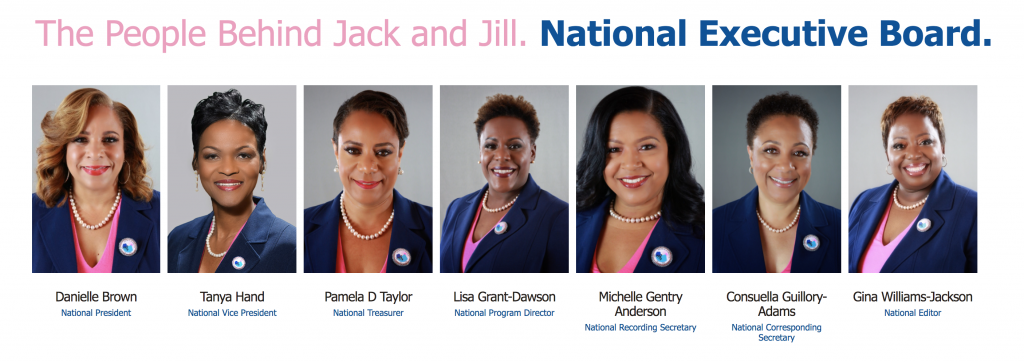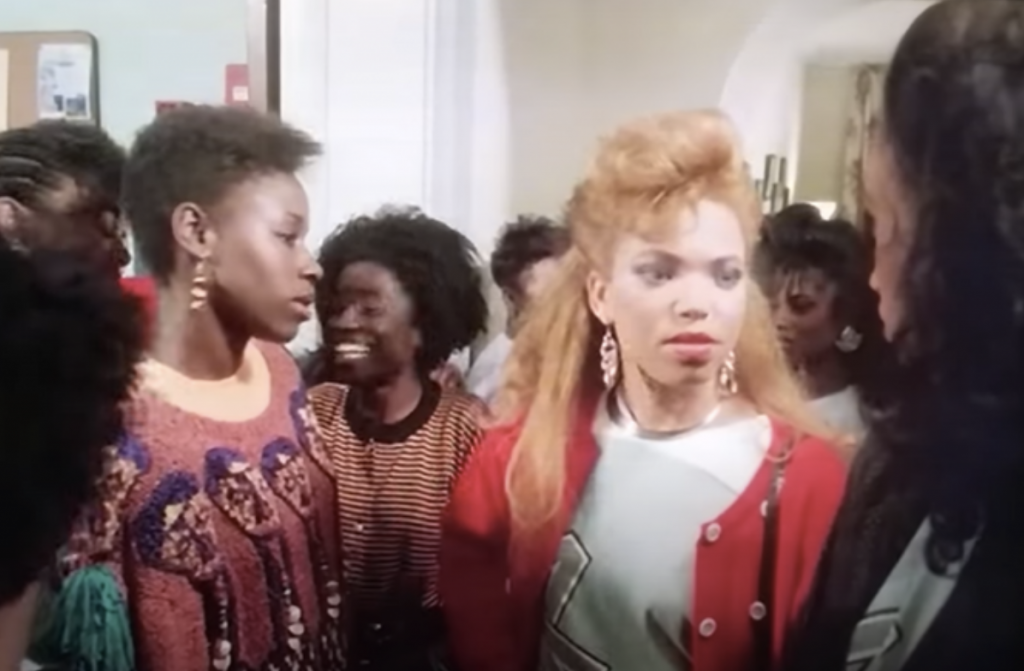- I Tested 5 Free AI Job Description Generators in the GPT Store (and Here’s What I Found) - February 13, 2025
- What is a Job Function and why it’s Important? - January 30, 2025
- When do you Capitalize Race? (Top 7+ questions people ask) - January 29, 2025
In the last 30 days, companies like Amazon, Twitter, and Apple started to ban the use of the phrase “brown bag” because some find it racist. The companies are banning “brown bag” even if it’s describing a “brown bag session”, a phrase often used to describe a “lunch and learn” session.
Amazon also added “brown bag” to its new internal Wiki page of potentially racist terms (see Amazon’s internal wiki page by Business Insider).
So, what’s the history behind brown paper bags? And why is it offensive?
It begins with the Brown Paper Bag Test.
The Brown Paper Bag Test
The phrase brown bag paper bag test (aka “brown bag test” or “paper bag test”) has a history related to racism and colorism. The test was allegedly used to determine certain privileges by comparing a person’s skin tone to a brown paper bag.
If a person’s skin tone matched or was lighter than the brown bag, they would be more likely to be accepted than a person with darker skin. In the Youtube video below, Mel Mel attempts to tackle the issue of colorism [and includes history on the brown paper bag test]:
Digging into the brown paper bag test history, we found that many popular African-American clubs and social organizations used this test to determine membership…churches and employers too.
The brown paper bag test was even seen in popular movies like Spike Lee’s School Daze. NBC News reported that:
“The custom is so deeply established in African-American lore that it was satirized a quarter of a century ago in Spike Lee’s movie “School Daze,” in scenes that chronicle the rivalry between the fictional Gamma Ray sorority — whose members must be “paper-bag light” — and darker-skinned activist students.”
In Spike Lee’s movie, School Daze, two groups of sorority women of color are at odds over which group’s hair and skin color are best. In the movie, the Gamma Rays had to be “paper bag light”. (source: School Daze Clip via YouTube
The Alpha Kappa Alpha Brown Paper Bag Test
A letter from 1928, written by sophomore Edward H. Taylor, at Howard University discusses the Alpha Kappa Alpha brown paper bag test and colorism. Watch the Yard details the statements made in the student newspaper “The Hilltop.” Watch the Yard said the article:
“accused fraternities of “splitting the various classes into groups of different shades — yellow, brown, and black.” According to Taylor, “The light-skinned students are sought after by the fraternities and sororities, particularly the latter, as members and the dark ones passed by. The darker brown students then form their own cliques while the blacks are left in the cold.””
Watch the Yard also mentions stories of the past requiring “skin lighter than a brown paper bag” in order to be a part of a sorority or fraternity and to participate in their events.
Jack and Jill Brown Paper Bag Test
Jack and Jill of America was established in 1938 with a mission of “nurturing future African American leaders by strengthening children through leadership development, volunteer service, philanthropic giving, and civic duty.”
But an article from the Pittsburg Courier says Jack and Jill has seen its share of negative press from the Black community over the last 81 years. Similar to African-American sororities and fraternities, in the early years, Jack and Jill had a reputation of only being for elite “light-skinned Blacks”. The article says:
“some Blacks saw it as open only to those who had ‘good hair’ and were able to pass ‘the paper-bag test'”
The paper brown bag test has gone by the wayside and based on the closing statements in this article, it seems the tides have turned in a good direction for Jack and Jill of America as well. The writer says:
“Jack and Jill members come in all shades of Blackness. They include deep brown chocolate members. They also include sweet butter almond ice cream members- but don’t hate on those light-skinned ones by hating on the organization’s early history.”
Here are pictures of the Jack and Jill team today:

Resumes Used to Emphasize “Light Colored”
Nadra Kareen Little from ThoughtCo. discussed colorism in her article about skin tone discrimination. The article said:
“Colorism didn’t disappear after the institution of slavery ended in the U.S. In black America, those with light skin received employment opportunities off-limits to darker-skinned blacks. This is why upper-class families in black society were largely light-skinned.”
Her article mentions a writer Brent Staples who discovered this while searching newspaper archives near the Pennsylvania town where he grew up. She said:
“In the 1940s, he noticed, Black job seekers often identified themselves as light-skinned. Cooks, chauffeurs, and waitresses sometimes listed ‘light colored’ as the primary qualification—ahead of experience, references, and the other important data. They did it to improve their chances and to reassure white employers who…found dark skin unpleasant or believed that their customers would.”
Our recent blog on 5 Examples of Racial Bias in Hiring touches on the topic of “blind resumes” to remove racial bias during resume screening.
Early Job Ads with Light-Colored Requirement

We found an article from the NY Times that gave an example of a job ad from the 1950s that specifically requested applicants with light-colored skin.
“The owner of Chock full o’ Nuts, a white man named William Black, advertised in the tabloids for ‘light colored counter help,’ an example of nth-degree discrimination.’’
Advertising jobs for people with lighter skin or “Eurocentric” features is no longer legal or acceptable when doing business, but research shows that these preferences still play a role in our society. The same NY Times article reported that:
“Researchers tell us that it affects how people vote; who appears in Hollywood movies and television news shows; who gets hired and promoted in corporate America; and even who gets executed for murder.”
The brown paper bag test may be a thing of the past, but colorism is unfortunately still a part of our society today [especially in the music industry]. What is colorism? An article by the NCCJ defines it as:
“A practice of discrimination by which those with lighter skin are treated more favorably than those with darker skin.”
Famous musicians like Wale and Vybz Kartel say artists like Drake and Sean Paul have been more successful because of their lighter skin color. Wale said in a recent article that:
“Drake has an advantage over darker skin rappers.”
“Brown Bag” in Job Ads Today
If you search for “brown bag” on Indeed.com or Linkedin you will still find some variation of the phrase in many job ads. Here is a screenshot of an ad for a Test Automation Architect. Notice the mention of “brown bag sessions”.
Fortunately, there are now tools that will help to flag Brown Bag and other exclusionary phrases. Ongig’s Text Analyzer (see below) improves job descriptions by flagging exclusionary phrases and providing inclusive synonyms.
Lipids and CSF Brown Paper Bag Tests Going Away?
Two other examples:
The “brown paper bag” also shows up in “Cerebrospinal Fluid Leak Testing” (CSF). Mayo Clinic says the CSF leak brown paper bag test is a way to test nasal fluids for the presence of cerebrospinal fluid leaks to diagnosed medical conditions.
There is also a brown bag test for the presence of lipids in scientific experiments.
It’s important to note that people using the phrase “brown bag” or “brown bag test” are not always intentionally trying to be biased. However, even if brown bag is an example of unconscious bias, it still might offend some people and may be on its way out as a term.
L’oreal’s “Light-Skinned” Products
Brands are certainly taking notice of such exclusionary language.
We recently found 18 Top Brands Changing Their Name to Avoid Racial Bias. L’Oreal and other brands like Johnson & Johnson are re-visiting wording and production of “Whitening” products (words like “fair”, “light” and “whitening” are potentially offensive to people of color).
Why I Wrote This
Ongig’s Text Analyzer software helps eliminate unconscious bias. It finds offensive/exclusionary words and gives you recommendations to replace them. We’d be happy to analyze your jobs to show you examples of unconscious bias. Wouldn’t you prefer to find bias before your candidates do!?
Shout-Outs
- Brown Paper Bag Test (by Dr. David Pilgrim of Ferris State University)
- Brown Paper Bag Test- Colorism (Mel Mel’s video on YouTube)
- Brent Staple’s article on As Racism Wanes, Colorism Persists
- NCCJ’s article on Colorism
- Repeating Islands’ article on Is Sean Paul The Reason Why Vybz Kartel Started Bleaching Skin?
- Wikipedia’s page on Brown Paper Bag Test
- Eugene Kim’s article on Amazon engineers built an internal wiki page that suggests alternatives to unconsciously racist terms like ‘brown bags,’ ‘cake walk,’ and ‘master/slave’
- The Pittsburg Courier’s article on Jack and Jill: Elitist, effective, either, neither, or both?
- Watch the Yard’s article on Paper Bag Test: Letter From 1928 Addresses Black Fraternity And Sorority Colorism At Howard University
- Nandra Kareem Nittle’s article on The Roots of Colorism, or Skin Tone Discrimination
- Mayo Clinic’s article on Cerebrospinal Fluid “leak” Testing
- M. Alex Johnson’s article on There’s more to Seattle ‘brown bag’ racial controversy than meets the eye



